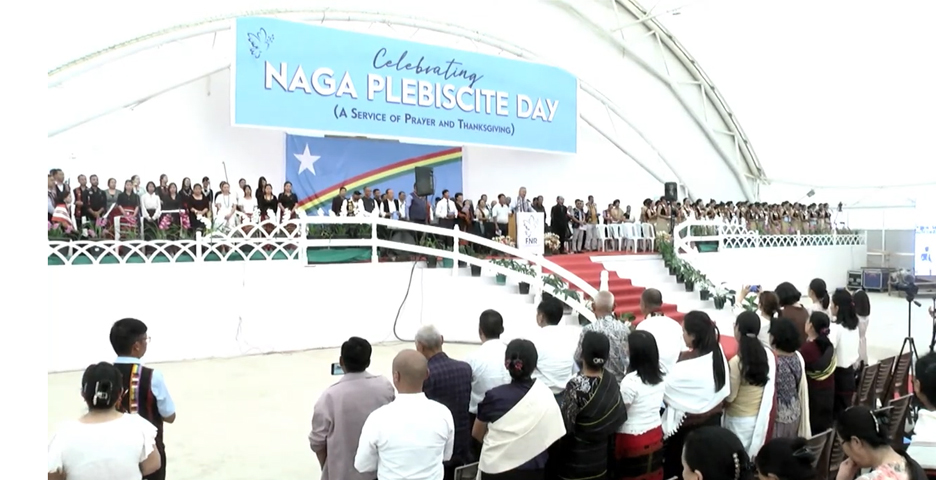Amidst a backdrop of mixed emotions, the commemoration of 73rd Naga Plebiscite Day on 16 May 2024 brought to the front the enduring quest for self-determination among Nagas. Despite division and despair, the event highlighted the deep-rooted significance of historical milestones in the Naga political narrative.
The commemoration, marking the 73rd anniversary of the Naga Plebiscite of 1951, served as a reminder of the unity and determination that characterized the Naga struggle for sovereignty. Participants, representing diverse Naga Political Groups gathered to pay homage to this moment of history. Meanwhile, in Hebron, communities from Nagaland, Myanmar, Arunachal Pradesh, and Manipur, gathered to celebrate the day.

Speaking at the event in Kohima, Rev Dr Wati Aier acknowledged the unhappiness, anger, and despair felt by young Nagas. Aier noted these emotions stem from a loss of belief in the possibility of a future for the Naga people. He lamented the erosion of Naga rights due to external pressures and internal divisions. However, he asserted, “Nagas are not yet destroyed.”
Gen Niki (Retd), President of NSCN/GPRN, called 16 May 1951 as one of the defining moments in the Naga journey for self-determination, where all Nagas gathered with the common goal of sovereignty, regardless of creed, color, or tribe. Kedallo, NNC/FGN & Co-Convenor, WC, NNPGs, Zhopra Vero, stated, “Until the Naga plebiscite of 1951, no act of the Nagas could be legitimately claimed as having a real national character.”
Significantly, the former convenor of WC NNPGs, Kitovi Zhimomi, addressed the NSCN-IM’s Framework Agreement with the Government of India and suggested combining the competencies of FA with Agreed Position to find a final solution.
“The NSCN-IM and the GoI signed the Framework Agreement on 3 August 2015. As per their agreement, they have agreed to solve their problem as defined in their competencies. Let them bring their competencies, and WC NNPGs will also bring their competency. Let’s club them together and find a solution,” stated Zhimomi.
Meanwhile, the Nationalist Socialist Council of Nagalim (NSCN-IM) observed the 73rd anniversary of the Naga Plebiscite at Camp Hebron. Joined by Naga civil societies from Nagaland, Myanmar, Arunachal Pradesh, and Manipur, the event highlighted cross-border unity among Naga communities.
Ngungtim Changmi of the Tirap Changlang Longding Peoples’ Forum (TCLPF) expressed hope that the commemoration would foster Naga solidarity and strengthens aspirations, while Michael Kiyarlynn of the Naga People’s Organization (NPO), Myanmar, and reiterated solidarity with the Nagas despite the event being new to him.
Despite the symbolism and solidarity displayed during the commemoration, challenges loom large on the path to resolution. Uncertainty prevails amidst internal discord and external pressures, necessitating inclusive dialogue and concerted efforts towards reconciliation.
As Dr H Hotokhu Chishi, retired Director, H&FW Nagaland, aptly puts it to Mokokchung Times, “Both India and NSCN prefer to go slow though intention differs from each other. GoI expects that Naga educated generations will slowly understand the Indian system and will get assimilated into the Indian Constitution.
NSCN expects that the Naga educated lot will understand the meaning of Self determination and fall in line with them at an extended time. Both exhibit patience under an extended liberal timeline.
My worry lies with the fact that by such stretch of patience and in timeless hope, Naga’s rights will disappear much the same way it happened to Aborigines in Australia and Red Indians in America.
The longer the time you take, the greater the risk you suffer.”
